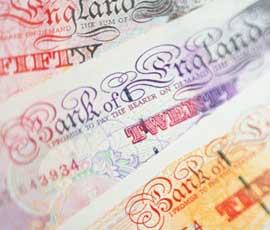Ag-inflation bumps up input costs

Farm input costs continue to rise, with agricultural inflation climbing to more than 4% during the past six months, the latest statistics reveal.
Ag-inflation reached 4.39% for the period August 2012 to February 2013, according to results from Anglia Farmers Agricultural Inflation Index, which were published at the Norfolk Farming Conference. It compares with an ag-inflation rate of 3.38% for the year to August 2012.
The overall inflation of 4.39% reflects a period of some instability, with significant increases in inflation seen for feed and animal health products (16.9%), fuel (11.2%) and seed (10.2%). The only area to have experienced deflation is machinery (-6.4%).
Costs have gone up for all farm types. Livestock experienced the largest increases with dairy costs rising by 10.07% and beef and lamb by 9.83%. Inputs for combinable crops increased by 2.76%, lying marginally behind sugar beet (3.73%) with potatoes rising significantly to 10.89%.
A comparison with the Retail Price Index (RPI) is also significant for farmers as the gap between ag-inflation and the RPI continues to widen. Comparing figures since 2006 at the base rate of 100, the RPI is now 139 and ag-inflation today is 174.
Rising consumer prices reflect some increases in input costs. Retail potato prices have risen by 25.7% over the past six months; while retail bread and margarine prices have increased by 4.6%. Retail beef and lamb prices have risen by 3.4% but production costs have risen 9.83%.
But some products show no increase at retail level – despite massive increases in input costs. While the cost of production for dairy farmers has risen by 10.07%, for example, wholesale milk prices remain unchanged.
Anglia Farmer’s Group chief executive Clarke Willis said: “While the costs of cereal and oilseed rape production have risen, inflation has been lower than for other enterprises as fertiliser and chemical costs have both seen increases of less than 1%.”
Rising fuel costs have affected all sectors. Potato production cost increases have been driven by the limited supply of seed following last year’s abysmal harvest, and rising animal feed prices have caused significant increases in costs for livestock and dairy farmers.
“Machinery is the only input to have experienced deflation in the past six months,” Mr Willis told delegates at the John Innes Centre, Norwich, on Thursday (21 February). “Workshop labour costs have decreased and the price of genuine and non-genuine wearing parts has also fallen or remained static.”
Costs in the index are noted when inputs are purchased, rather than used. Prices may therefore reflect prudent purchasing practices – including, for example, fertiliser bought a season ahead but not applied until the following year.
Launched in 2006, the index uses information from Anglia Farmer’s buying office, which buys more than £250m of farm inputs annually. Results are a weighted average of nine cost centres and 132 cost items based on average farm and grower expenditure.
Livestock producers worst hit by rising input costs
